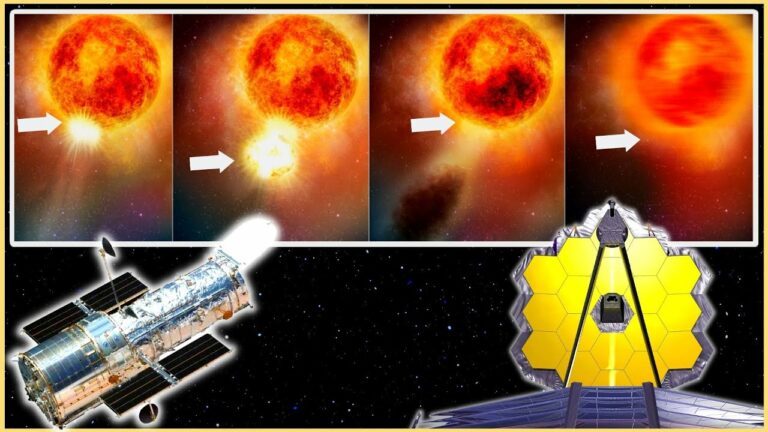Never Before Seen! Red Supergiant Star Betelgeuse Slowly Recovering After Blowing Its Top
A NASA Hubble Space Telescope and other observatories have been used to analyse data to conclude that Betelgeuse, a bright red supergiant star, quite literally burst into flames in 2019, causing a massive Surface Mass Ejection. There has never been a star’s behaviour like this before. Scientists want to use NASA’s James Webb Space Telescope to detect the ejected material in infrared light.
In an event known as a Coronal Mass Ejection (or CME), our Sun frequently throws out sections of its tenuous outer atmosphere. However, the Betelgeuse SME ejected 400 billion times the mass of a conventional CME!
The monstrous star is still reeling from the effects of the terrible upheaval. “Betelgeuse continues doing some very unusual things right now; the interior is sort of bouncing,” said Andrea Dupree of the Center for Astrophysics | Harvard & Smithsonian in Cambridge, Massachusetts.
These new findings shed the light on how red stars lose mass when their nuclear fusion furnaces burn out before exploding as supernovae. The quantity of mass lost has a big impact on their fate. Betelgeuse’s unexpectedly petulant behaviour, on the other hand, is not proof that the star is poised to explode anytime soon. As a result, the mass loss event is not always indicative of an impending explosion.
Dupree is now pulling together all the puzzle pieces of the star’s petulant behavior before, after, and during the eruption into a coherent story of a never-before-seen titanic convulsion in an ageing star.
“We’ve never before seen a huge mass ejection of the surface of a star. We are left with something going on that we don’t completely understand. It’s a totally new phenomenon that we can observe directly and resolve surface details with Hubble. We’re watching stellar evolution in real-time.” said Dupree.
Even more incredible, the supergiant’s 400-day pulsation rate has vanished, at least temporarily. For about 200 years, astronomers have seen this pattern in fluctuations in Betelgeuse’s brightness and surface movements. Its destruction attests to the blowout’s intensity.
According to Dupree, the star’s internal convection cells, which cause the regular pulsing, may be swirling around like an unbalanced washing machine tub. The TRES and Hubble spectra indicate that the outer layers have returned to normal, but the surface is still bouncing like a dish of gelatin dessert while the photosphere rebuilds.
Betelgeuse has grown so large that if it replaced the Sun at the centre of our solar system, its outer surface would stretch beyond Jupiter’s orbit. In 1996, Dupree utilised Hubble to resolve hot regions on the star’s surface. The first direct picture of a star other than the Sun was obtained.
NASA’s Webb Space Telescope may be able to detect the ejected material in infrared light as it continues moving away from the star.
Do not forget to share your opinion with us to provide you with the best posts !




0 Comments